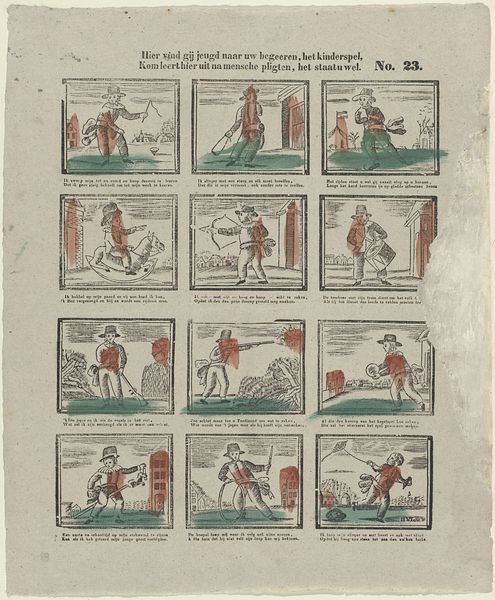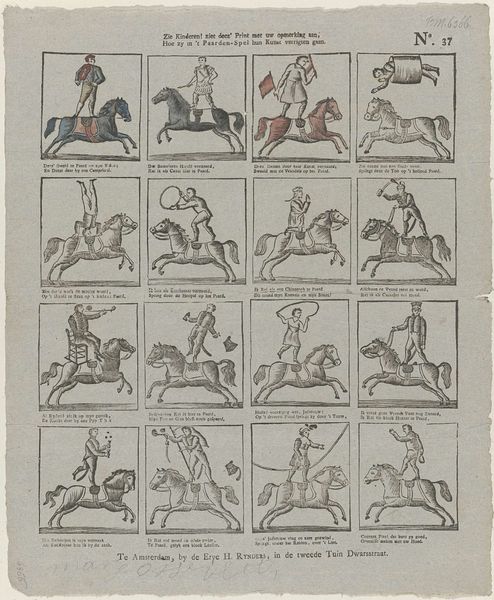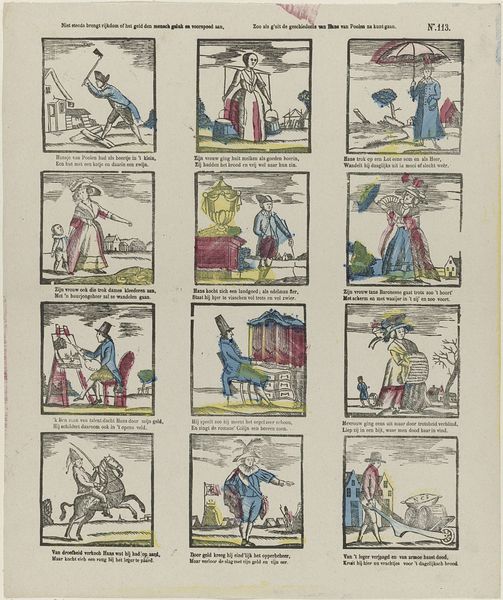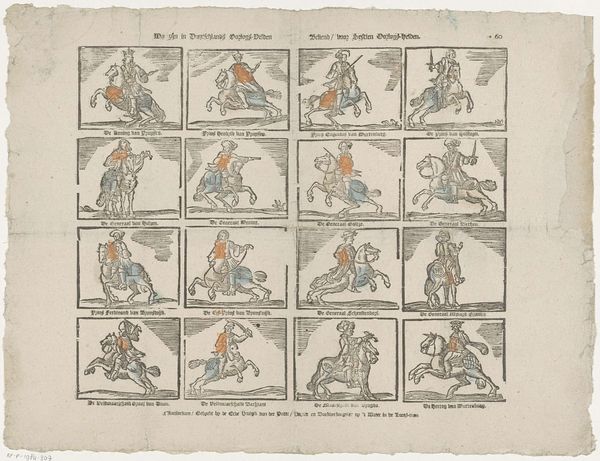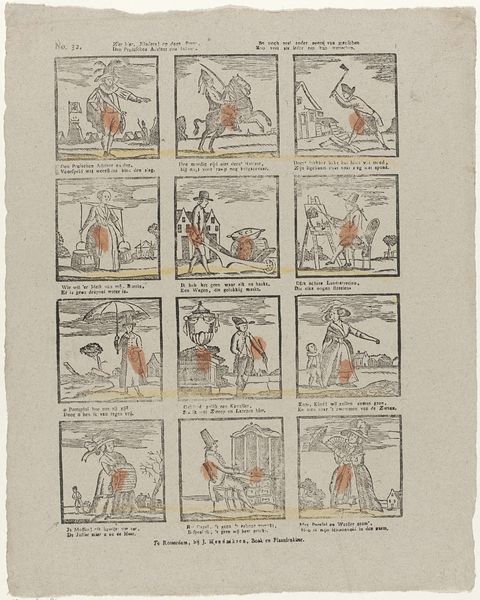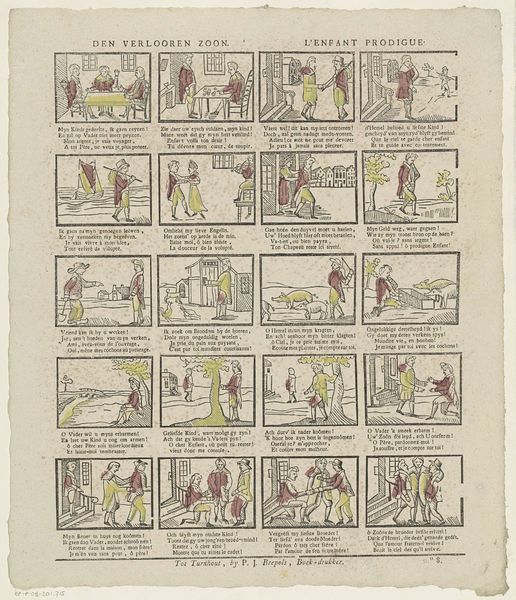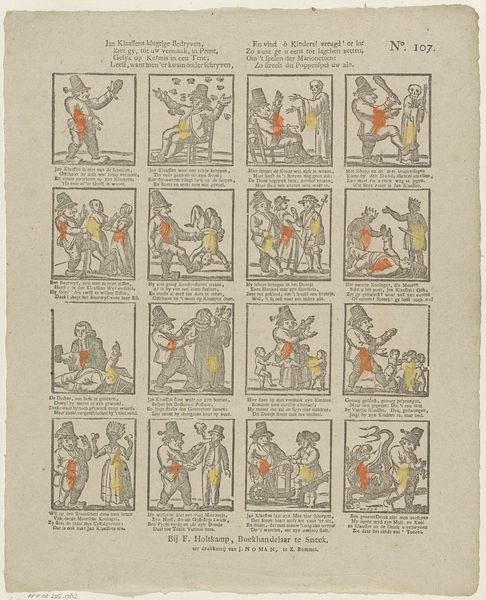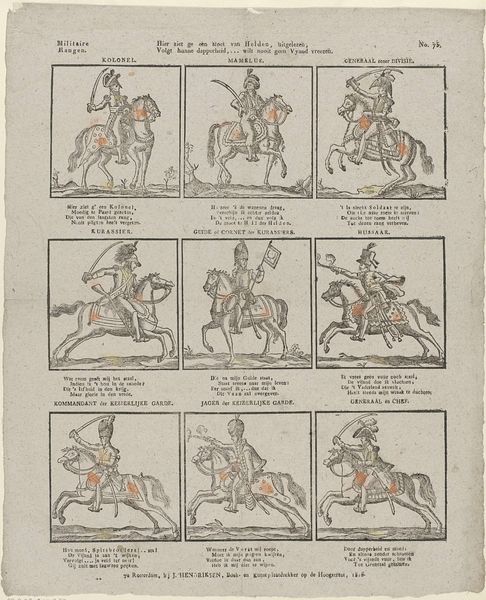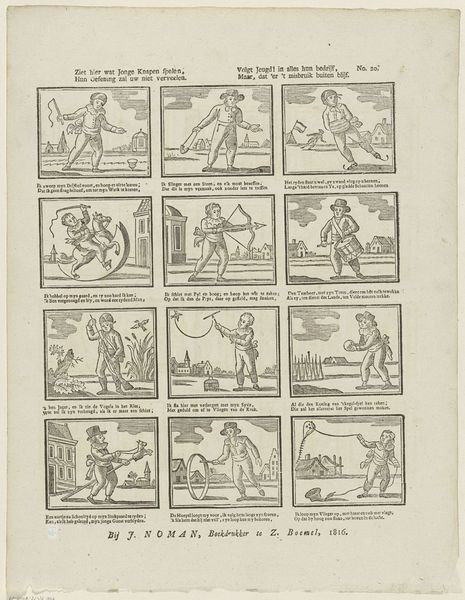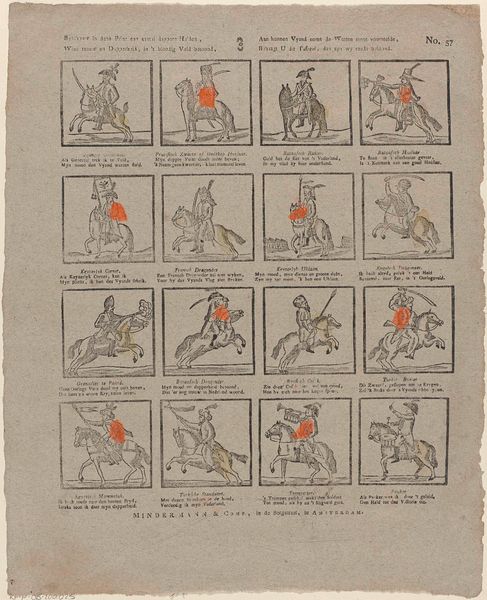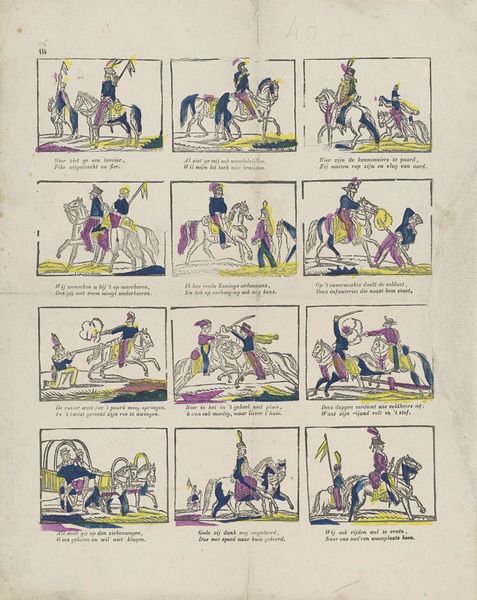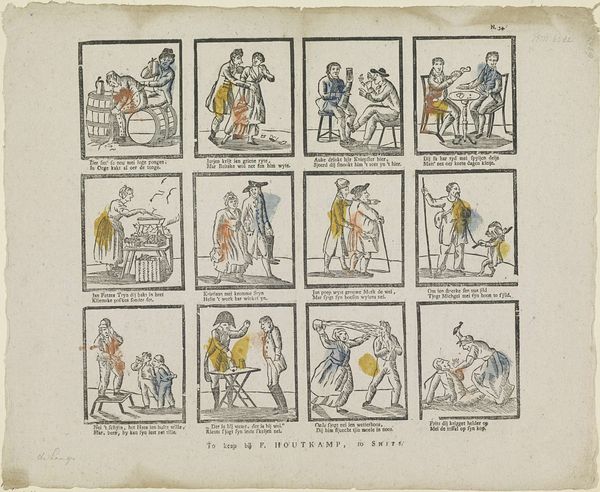
Ziet hier wat een jonge knapen spelen, / Hun oeffening zal u niet vervelen. / Volgt jeugd in alles hun bedrijf; / Maar, dat 'er 't misbruik buiten blijf 1806
0:00
0:00
print, etching, engraving
#
comic strip sketch
#
narrative-art
#
dutch-golden-age
# print
#
etching
#
comic
#
genre-painting
#
engraving
Dimensions: height 407 mm, width 325 mm
Copyright: Rijks Museum: Open Domain
Editor: This is "Ziet hier wat een jonge knapen spelen…" which translates to "See here what young boys play," an etching from 1806 by Jan Hendriksen. It’s composed of small scenes, almost like a comic strip, depicting children at play. It’s charming, but I’m curious about the intention behind it. What can you tell me about the cultural context in which this piece was created? Curator: This print offers us a window into the evolving attitudes towards childhood and education at the turn of the 19th century. The depiction of various games – playing with a hoop, flying a kite, playing soldier – highlights the importance placed on physical activity and moral development in young boys. Editor: Moral development? Curator: Yes, the text accompanying the images isn't just descriptive; it’s prescriptive. It guides the viewer to see the virtue in youthful play, but also warns against excess. Consider how genre painting and narrative art influenced public perceptions of childhood at that time. The emphasis on ‘correct’ play speaks to anxieties about social order during the Batavian Republic, a time of significant political and social upheaval influenced by the French Revolution. How might this compare with the art and leisure activities seen today? Editor: I hadn’t thought about it as having political undertones. Today, childhood is viewed differently, perhaps more about free expression than rigid moral instruction. Curator: Indeed. And this artwork reflects an era where the role of the state and institutions was increasingly focused on shaping ideal citizens. Not through overtly political symbols, but through influencing daily life and social behaviors. Editor: That’s really fascinating. I’ll certainly look at similar art of this era through a different lens from now on! Curator: And I will consider the shift in emphasis on the roles of authority on children with new perspective too!
Comments
No comments
Be the first to comment and join the conversation on the ultimate creative platform.
